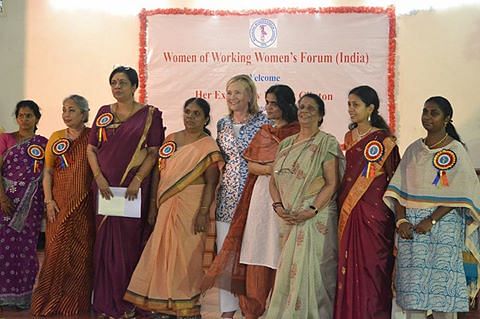Contrary to commonplace liberal assumptions, young Indians cling to traditional notions when it comes to gender equality, finds a recent survey. But that is not surprising as India is still in the grip of patriarchy, experts say.
Support for gender equality among Indian youth may not have as much traction as one would ordinarily think, if the findings of a recent sample survey-based study are to be believed.
As per the survey – conducted in 2016 by the Centre for the Study of Developing Studies (CSDS) in partnership with Konrad Adeneur Stiftung (KAS) to study the attitudes and choices of youth aged 15-34 – more than half of the respondents believe that wives should always listen to their husbands. This, even as marriage as an institution is seen to be less important by youngsters than it was a decade ago.
Moreover, the survey found that 41 per cent of the entire youth sample, and 33 per cent of young women surveyed, believe that it was not right for women to work after marriage. Juxtapose this to the study conducted by the UNDP in 2011-12, which found that 35.9 per cent of married women aged 25-44 engaged in labour force, compared to the 48.8 per cent in 2004-05, and we are led to understand that a significant section of the Indian population continues to be averse to the formal employment of married women.
Are we to believe then that there is a rise of traditionalism among Indian youth? According to a source closely associated with the survey, no. The fact, he says, is that the survey adopts an extremely broad definition of who constitutes the youth. The youth, he says, is not only those residing in metropolitan cities or those currently studying. The findings of the survey also represent views of working professionals or unskilled workers who are 30 or older and live in a small town or a village. India, he adds, is a patriarchal country so these findings are not in the least surprising. One would be surprised, instead, if an overwhelming majority of the youth was in favour of women being formally employed after marriage.
Gender rights activist Kavita Krishnan agrees. “There is a strong persistence of patriarchal ideal and values (in society), and not enough has been done to undo these values,” she says. There are few government advertisements, for example, which would propagate or even talk about the autonomy of women, she explains. Patriarchal ideas which were not even part of tradition for many communities are being reproduced and mainstreamed, thus explaining the overwhelming acceptance of outmoded ideas, Krishnan adds. Hindi TV serials, for example, contribute immensely in constructing the image of the good Indian wife.
The survey also found that despite the growing rhetoric of the “working Indian woman”, where the word “working” necessarily refers to formal employment or visible labour of women, there has been a jump of 2 percentage points in the ratio of stay-at-home women or housewives since 2007.
An anthropologist from Tata Institute of Social Sciences (TISS), Mumbai, however, questions the conclusions of the survey. It is important to question who the survey actually represents, she contends, speaking on condition of anonymity. Besides, nowhere do such studies take into account the informal labour that innumerable women perform outside the household since there are limited ways of computing it. There is massive feminisation of agriculture, for instance, which has gone largely undocumented.
While the findings may burst a superficial liberal bubble, it is a widely acknowledged fact in academia that as social groups gain more upward mobility, the tendency for women to “return” to the domestic sphere also increases. In fact, the position of the upper-class, upper-caste woman who stays within the precincts of the household performing “honourable” duties has historically been extremely enviable for the poor, lower-caste woman, who must work in order to beat poverty – even at the cost of family honour.
The fact that the survey found an increase in the number of youngsters who support higher education for women is no contradiction to the above mentioned trends. Instead, it suggests a collective acceptance of gradualism when it comes to the progress of women, explains the source linked to the survey. Back in the day, there was limited support even for elementary education for the girl child. Considering that there is ever-growing support for higher education for women now, it is safe to assume that there would be greater acceptance of formal employment of women in the future, he says.
Going by the trends emerging in the U.S., however, the assumption may be too facile. According to the 2014 findings of the General Social Survey, for example, there has been a sharp decline in the number of men aged 18-25 who reject the superiority of the male-breadwinner family from an impressive 83 per cent in 1994, to just 55 per cent in 2014. While the decline in number of women who reject such superiority was far lesser, it nevertheless did drop from 85 per cent in 1994 to 72 per cent in 2014.
There are a host of possible reasons that could explain these trends. The hostility among men to the strides made by women in the professional realm, and the belief that those strides have been made at the cost of the collective interests of men, may be one. The want of logistical support for working mothers in the U.S., could be another. Or sweepingly put, a greater acceptance of the notion of women’s biological impulse as primary caregivers may be yet one more factor.
While the reasons in the Indian and American contexts are entirely different, the sway of traditionalism over young minds, when it comes to women, should be a cause of concern for feminists across societies. These recent surveys are timely reminders.
Sanya Dhingra is a Reporter with ThePrint. You can follow her on Twitter @DhingraSanya






